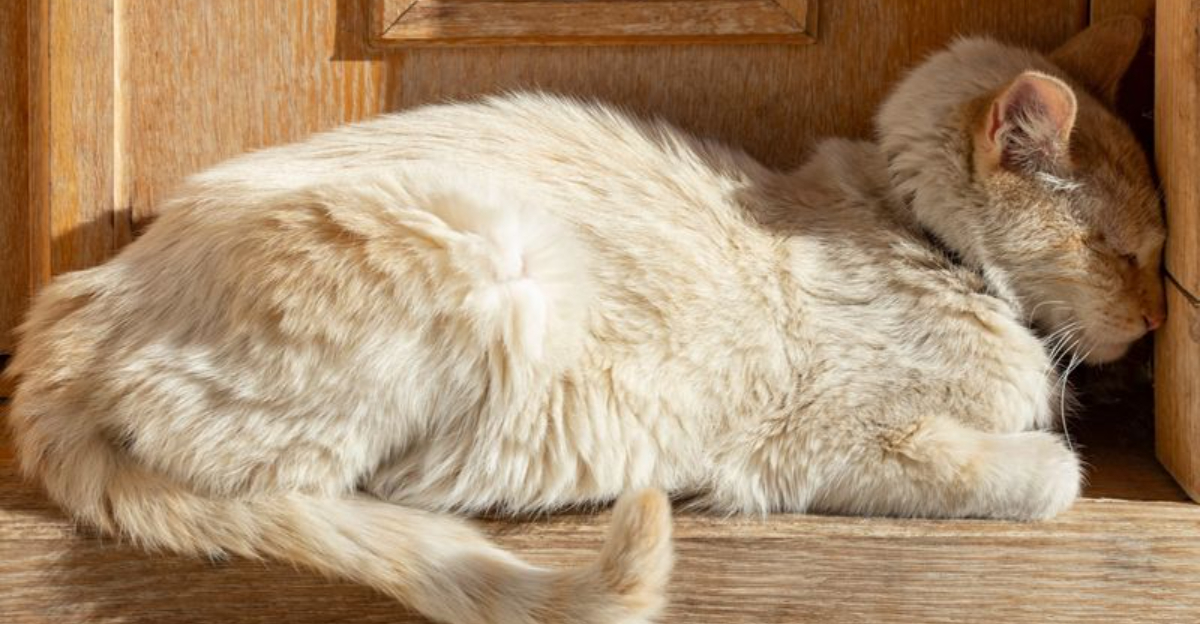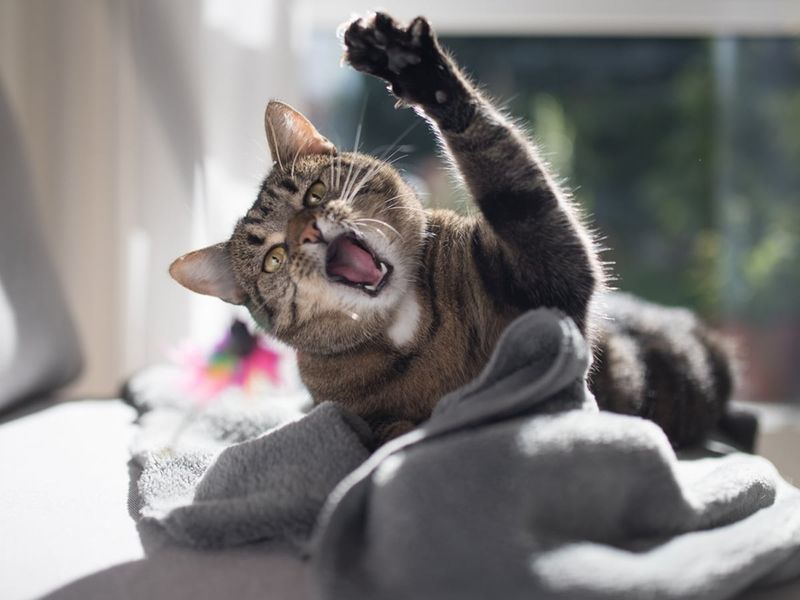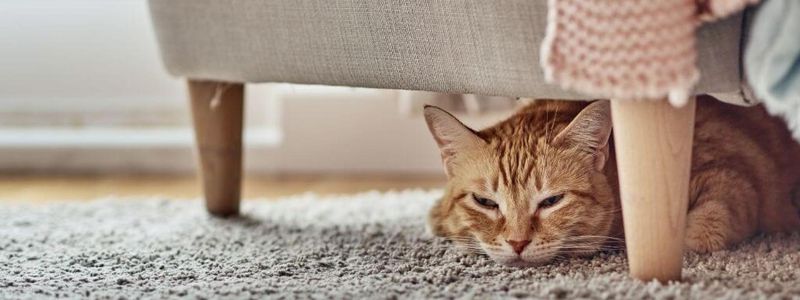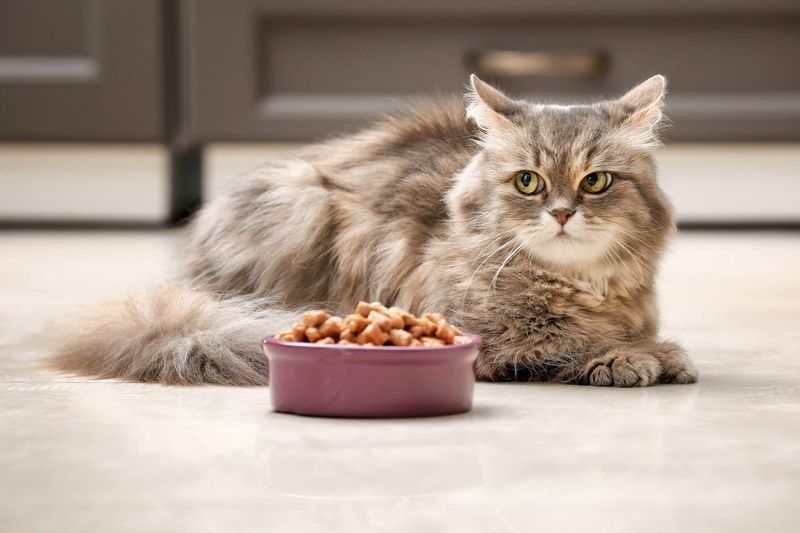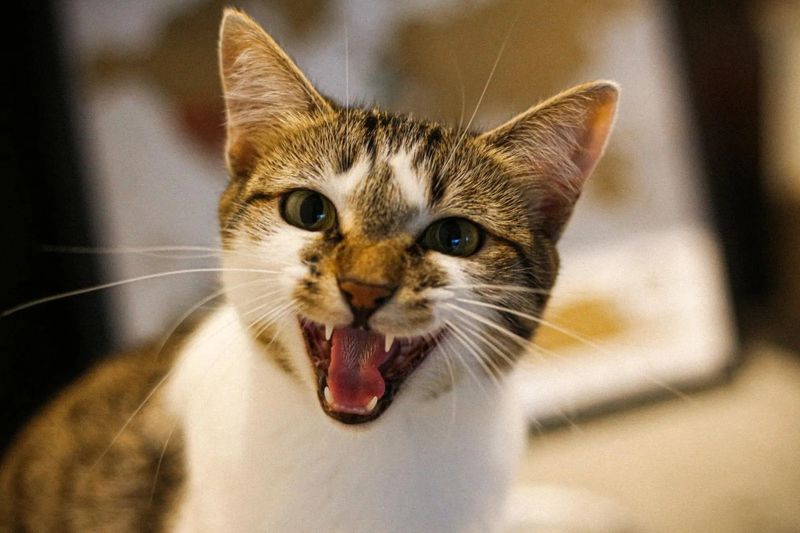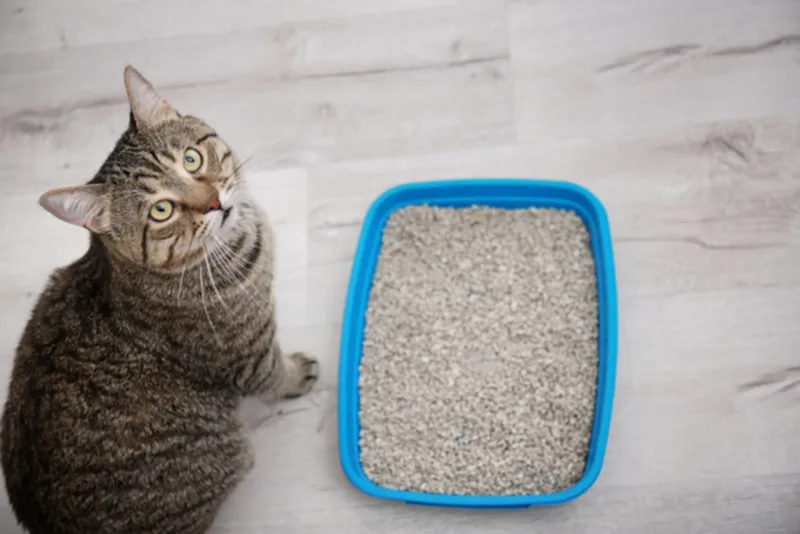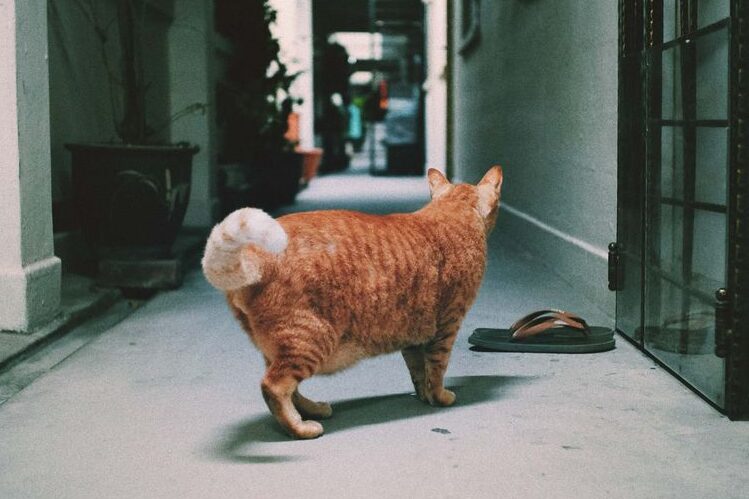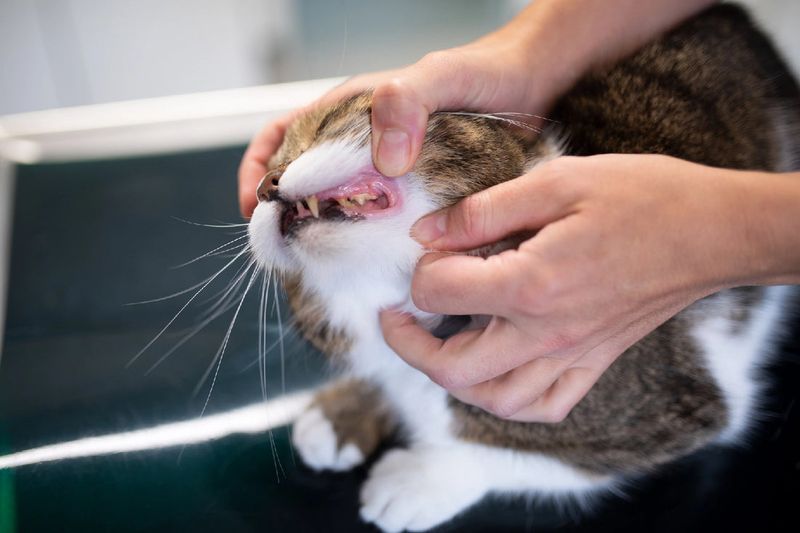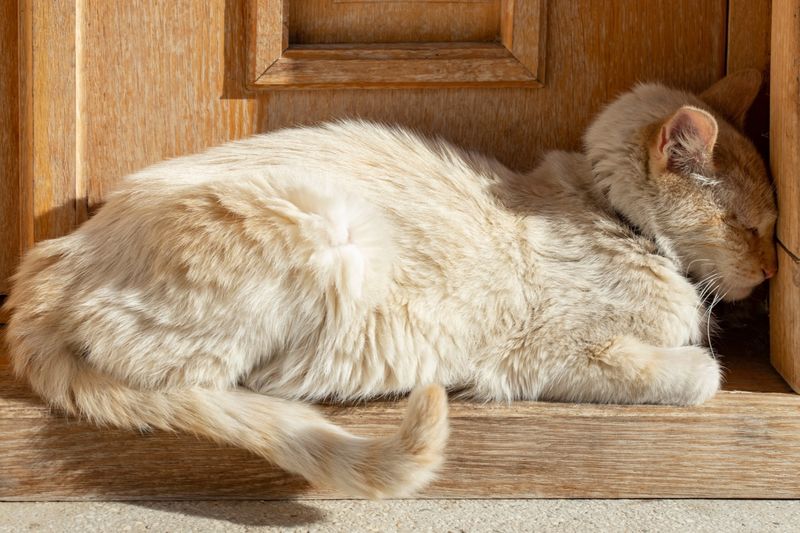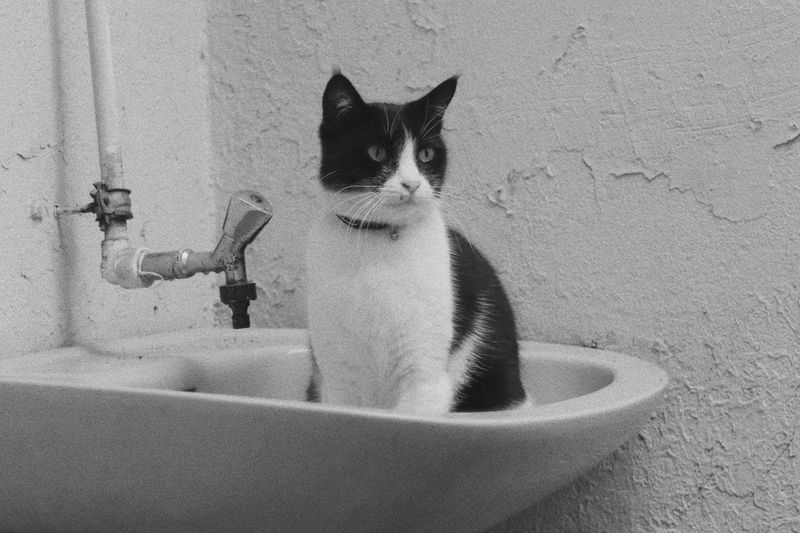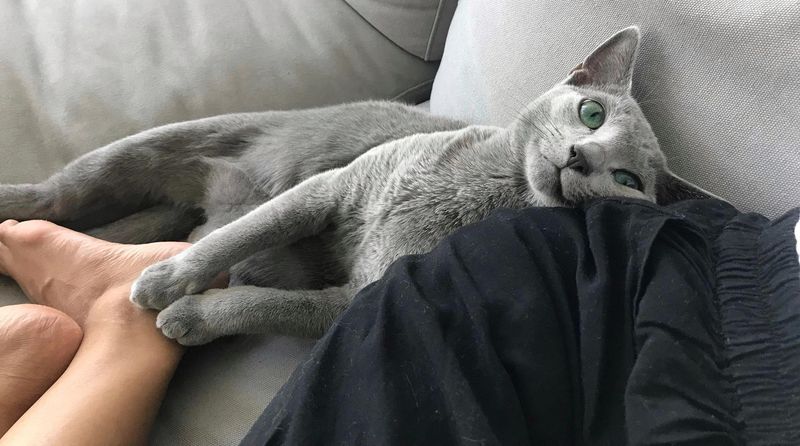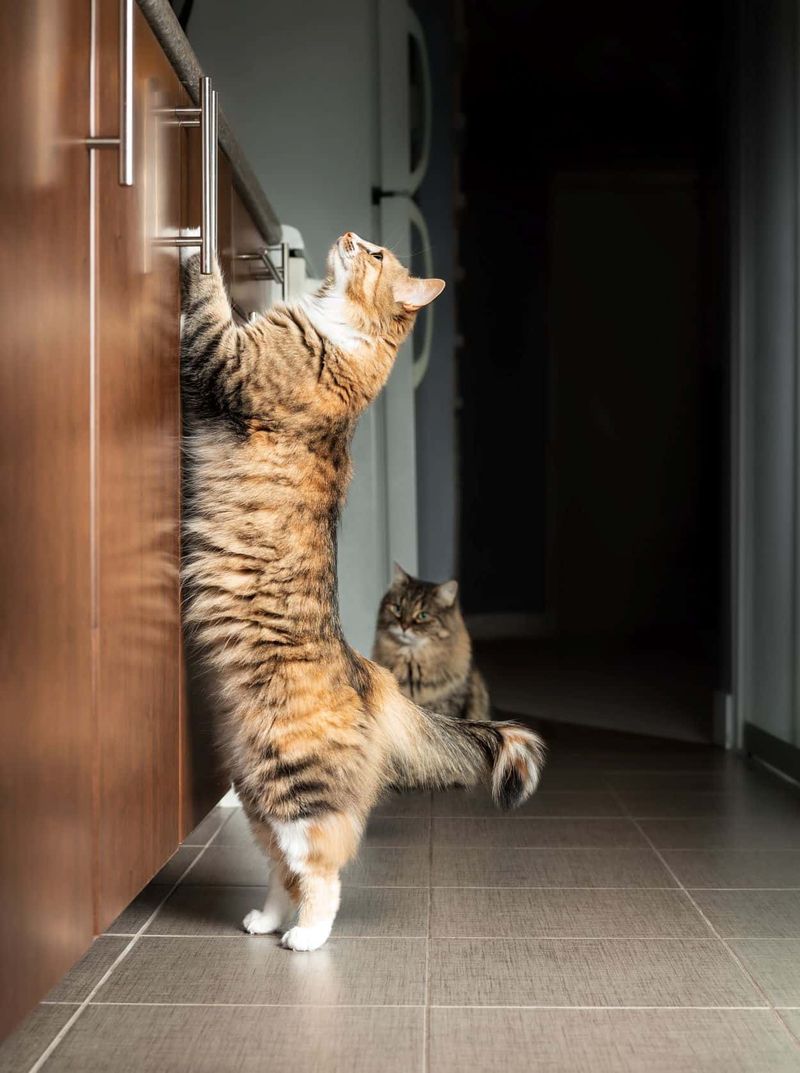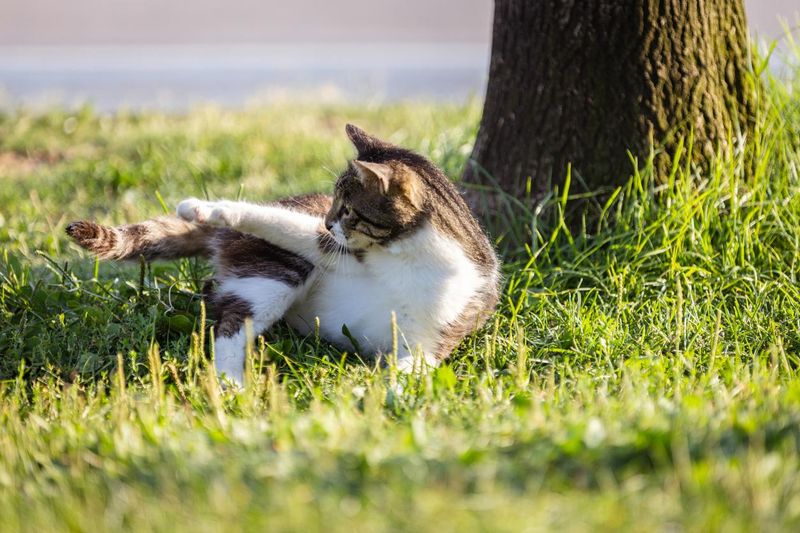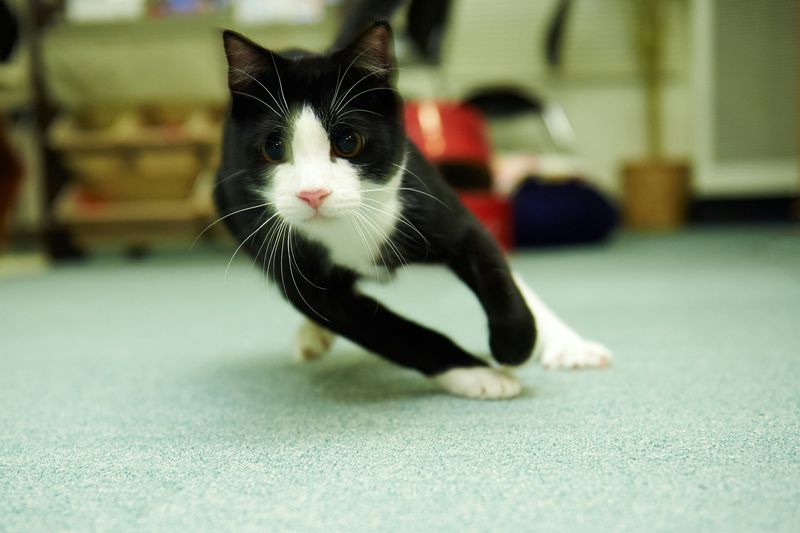📖 Table of Content:
- 1. Sudden Aggression or Biting
- 2. Excessive Hiding
- 3. Drastic Changes in Appetite
- 4. Frequent Meowing or Yowling
- 5. Avoiding the Litter Box
- 6. Excessive Grooming or Over-Grooming
- 7. Unkempt or Greasy Fur
- 8. Sudden Weight Loss or Gain
- 9. Bad Breath (Halitosis)
- 10. Walking in Circles or Head Pressing
- 11. Drinking More Water Than Usual
- 12. Sudden Clinginess or Unusual Affection
- 13. Difficulty Jumping or Moving Around
- 14. Tail Chasing or Overly Aggressive Play
- 15. Change in Sleeping Patterns
Cats are captivating creatures, each with their own distinct personality and set of behaviors. Their quirks and playful antics often make them even more endearing to their owners. However, not all unusual behaviors should be dismissed as mere feline eccentricities. Some actions may actually be warning signs of deeper health or emotional concerns.
While many of a cat’s habits are harmless and part of their natural instincts, certain changes in behavior can indicate underlying issues. A sudden shift in temperament, eating habits, or grooming routines could point to stress, illness, or even pain. Recognizing these potential red flags early can help prevent serious health problems and ensure your cat gets the care it needs.
By paying close attention to these behaviors, cat owners can better understand their pet’s well-being and respond appropriately. Whether it’s excessive hiding, aggression, or unusual vocalizations, these signs shouldn’t be ignored. Being proactive about behavioral changes can make a significant difference in your cat’s overall happiness and longevity.
1. Sudden Aggression or Biting
When a friendly cat suddenly turns aggressive, it’s often a cry for help. This behavior shift can point to pain or stress, ranging from arthritis to dental issues or even neurological disorders. If your feline friend starts biting without provocation, it’s crucial to observe any additional changes. Consider consulting a vet to rule out potential medical causes. In some cases, environmental stressors like a new pet or household change can trigger this aggression. Ensure your cat feels secure and loved, and monitor any patterns or triggers that may escalate the behavior.
2. Excessive Hiding
While some cats prefer solitude, a sudden increase in hiding can be a worrying sign. This behavior may indicate feelings of fear, anxiety, or even illness. Conditions such as infections, kidney disease, or stress-related issues can cause a cat to retreat more than usual. If your cat vanishes for long periods, it’s time to investigate. Check for any signs of distress or pain, and consider environmental changes that might have triggered this response. Providing a safe, comforting space can help, but consulting with a vet is often advisable to rule out medical causes.
3. Drastic Changes in Appetite
A sudden shift in eating patterns can be a major red flag for underlying health issues. If your cat’s appetite increases, it might signal diabetes or hyperthyroidism. Conversely, a decreased appetite can indicate dental disease, kidney failure, or cancer. Monitor your cat’s eating habits closely; take note of any additional symptoms like weight changes or lethargy. Addressing dietary changes promptly with your vet ensures timely diagnosis and treatment. In some cases, stress or environmental factors may also play a role, demanding a holistic approach to your cat’s well-being.
4. Frequent Meowing or Yowling
While some cats, particularly Siamese, are naturally vocal, excessive meowing or yowling—especially if it’s new—warrants attention. This behavior can be linked to pain, anxiety, cognitive decline in older cats, or pressing medical issues. If your cat suddenly becomes more vocal, consider their environment and any recent changes that might affect them. Engaging with your pet and providing mental stimulation can sometimes alleviate the issue. Nevertheless, a vet visit is advisable to rule out health concerns. Understanding your cat’s sounds is key to addressing their needs effectively.
5. Avoiding the Litter Box
A cat avoiding its litter box can signal serious health concerns, such as urinary tract infections, bladder stones, or kidney disease. Stress-related issues can also lead to this behavior, often triggered by changes in the household. For male cats, litter box avoidance might indicate a life-threatening urinary blockage. Ensure the litter box is clean and accessible, and consider the placement and type of litter used. Observing your cat’s bathroom habits can provide crucial insights into their health. Immediate veterinary attention is recommended to prevent complications and ensure your cat’s comfort.
6. Excessive Grooming or Over-Grooming
Cats are meticulous groomers, but excessive grooming can lead to bald spots or skin irritation. This behavior often indicates allergies, stress, parasites, or skin infections. If your cat is grooming itself to the point of harm, it’s essential to investigate further. Check for any visible skin conditions or changes in their environment that might contribute to anxiety. A vet can help identify underlying causes and recommend appropriate treatments. Addressing the root of the problem, whether it’s medical or emotional, can restore your cat’s health and comfort.
7. Unkempt or Greasy Fur
If a cat stops grooming, resulting in unkempt or greasy fur, it’s typically a sign of discomfort or illness. Pain, arthritis, obesity, or depression can hinder grooming efforts, leading to a neglected appearance. Additionally, changes in coat texture or sheen can point to liver disease or thyroid problems. Observing your cat’s grooming habits provides insight into their overall well-being. Encourage gentle brushing to help maintain their coat, but don’t overlook seeking veterinary advice. Identifying the cause of grooming neglect ensures your cat remains healthy and comfortable.
8. Sudden Weight Loss or Gain
Significant fluctuations in a cat’s weight can be alarming. Weight loss might indicate hyperthyroidism, diabetes, or cancer, while sudden weight gain could signal metabolic disorders, heart disease, or fluid retention due to organ failure. Keeping tabs on your cat’s weight is crucial for spotting early warning signs. If you notice drastic changes, consult your vet to identify underlying causes and receive guidance on managing your cat’s diet and health. Regular weigh-ins and a balanced diet are essential for maintaining your cat’s optimal weight and preventing related health issues.
9. Bad Breath (Halitosis)
Foul-smelling breath in cats is often an indicator of dental disease, oral infections, or kidney issues. Bad breath should never be dismissed as normal, as it can signify serious health problems. Sweet-smelling breath, in particular, can be a sign of diabetes. Regular dental check-ups and cleanings are vital for maintaining oral health and preventing related complications. If your cat develops persistent halitosis, schedule a vet visit to explore potential underlying causes. Addressing these issues early can prevent further health deterioration and ensure your feline friend’s comfort.
10. Walking in Circles or Head Pressing
If a cat exhibits behaviors like walking in circles or head pressing against surfaces, it may indicate neurological issues. Such actions can be signs of a stroke, brain tumor, or other severe conditions requiring immediate attention. Observing these unusual behaviors calls for urgent veterinary evaluation to determine the root cause. Early detection of neurological problems can significantly improve treatment outcomes. Keeping a watchful eye on your cat’s movements and reactions is crucial for identifying these red flags promptly. Ensure a safe, clutter-free environment to avoid accidents.
11. Drinking More Water Than Usual
Increased thirst in cats can be alarming, often pointing towards diabetes, kidney disease, or hyperthyroidism. Watching your cat drain their water bowl much faster than usual should prompt a vet visit to investigate potential issues. Early diagnosis and intervention are key to managing these conditions successfully. It’s vital to maintain a consistent supply of fresh water for your cat, but also to monitor for any other accompanying symptoms like weight changes or lethargy. Keeping track of your cat’s water intake provides essential clues to their health status.
12. Sudden Clinginess or Unusual Affection
A cat becoming overly clingy or affectionate can be endearing but may also signal underlying issues. This behavior might suggest illness, anxiety, or changes in the environment that make the cat feel insecure. If your feline friend suddenly demands more attention, consider any recent changes in their routine or surroundings. Providing reassurance and maintaining a consistent environment can help alleviate their anxiety. However, if the behavior persists, a vet check-up is wise to exclude potential health problems. Understanding and responding to your cat’s emotional needs enhances their comfort and happiness.
13. Difficulty Jumping or Moving Around
Cats are naturally agile, so difficulty jumping or moving around can be concerning. Such struggles often indicate arthritis, joint issues, or injuries, particularly in older cats. Observing your cat’s mobility and any signs of discomfort is crucial for addressing these issues early. Providing soft bedding and accessible spaces can ease their movement. Consulting with a vet for appropriate treatments or supplements can significantly improve your cat’s quality of life. Encouraging gentle play and exercise within their limits helps maintain their muscles and overall health.
14. Tail Chasing or Overly Aggressive Play
While playful behavior is common in cats, excessive tail chasing or aggressive play can indicate underlying problems. This could be a sign of feline hyperesthesia syndrome, neurological disorders, or severe anxiety. Observing the frequency and intensity of these actions helps determine if intervention is needed. Providing mental stimulation and a stress-free environment can mitigate these behaviors. If they persist, consulting a vet is crucial to explore potential medical or psychological causes. Tailoring playtime to your cat’s needs ensures a happy and balanced lifestyle.
15. Change in Sleeping Patterns
A sudden shift in a cat’s sleeping patterns—either sleeping more or becoming hyperactive at night—can be indicative of underlying health issues. Increased sleep might signal pain, anemia, infection, or depression, while restlessness could point to cognitive dysfunction or thyroid disease. Monitoring your cat’s sleep habits provides insights into their well-being. Ensuring a comfortable sleeping area and maintaining a regular routine can help manage these changes. However, if sleep patterns disrupt their usual behavior, a vet visit is recommended to rule out medical concerns and provide peace of mind.
